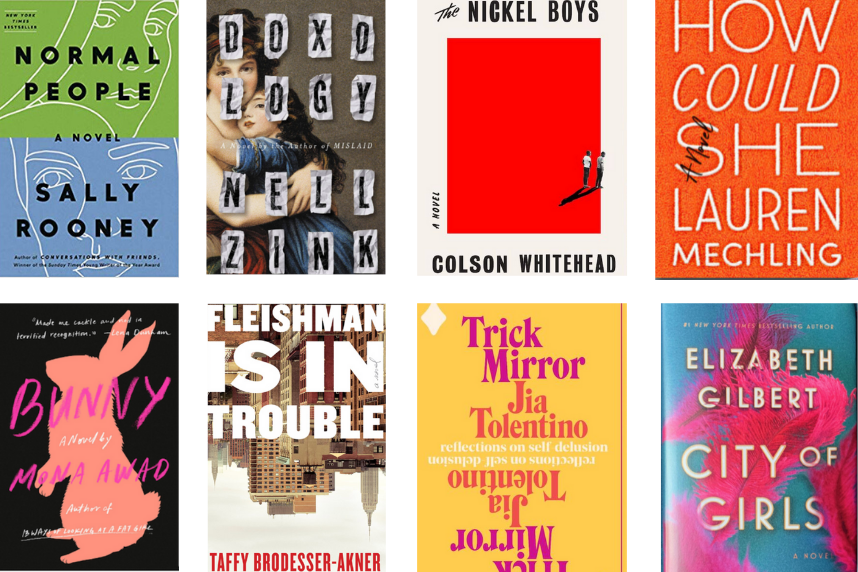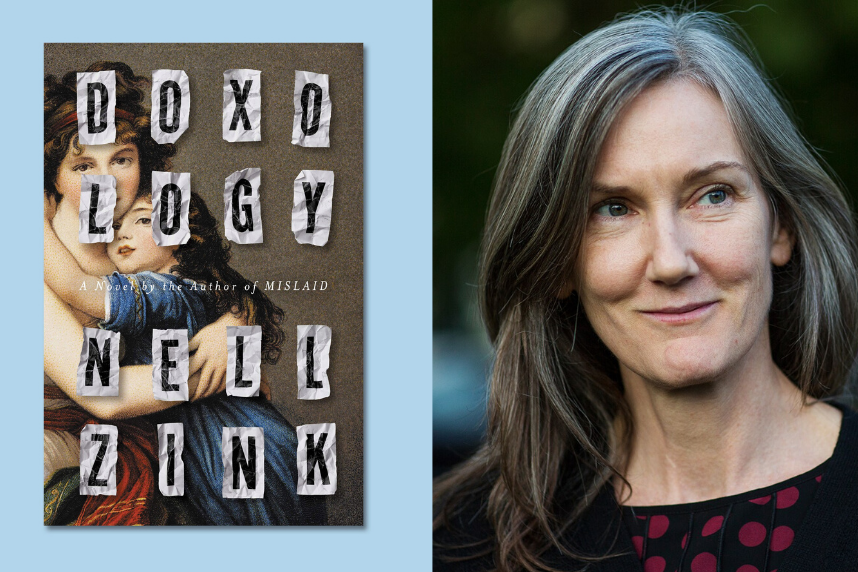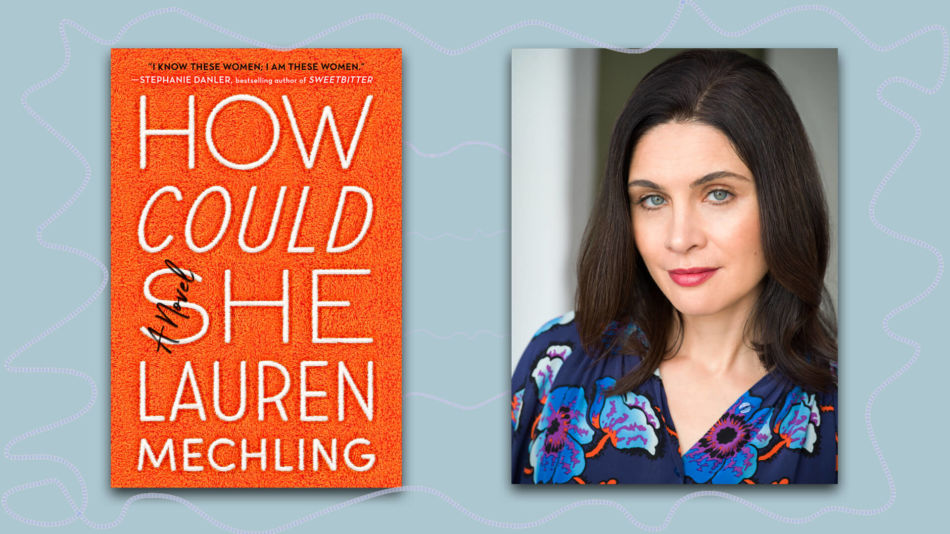
There’s a lot to mine from a “best books of the year” list. If you’re an avid reader, it’s like a scorecard for your personal selections—how did the critics’ picks compare to yours? If you’re behind on your holiday shopping, it’s a cheat sheet for the perfect gift. And if you’re like me, it’s a guide to what to read next.
Of course, these lists are always subjective by nature, but ours comes with a few unique caveats. We feature more female authors than most, a byproduct of the fact that our contributors are predominantly women. We also include a few books published in recent years, because we ask our writers to recommend the books they particularly loved in 2019, whatever their date of publication. Having spent much of this year revisiting classics like White Teeth and Motherless Brooklyn, I’m looking forward to using this list to catch up on current favorites. I hope you’ll find fresh voices here to add to your 2020 reading, too.

Doxology by Nell Zink
If you don’t already know of the irreverent and endlessly creative Nell Zink, who published her first novel at 50, you’re welcome. Her latest book, Doxology, isn’t a perfect novel but it is one of the most enjoyable I read this year. Set between D.C. and lower Manhattan, the book spans a punk-era Lower East Side, the dot-com boom, and contemporary climate change activism. Zink’s expat remove (she moved to Germany nearly 20 years ago) allows her to cleverly expose the absurdity that is late-stage capitalism in America. The book centers around a punk trio, two of whom procreate and all of whom raise the child. We see the before years of a gritty 80s NYC (and $100 rent), follow the characters through the trauma of 9/11, and then move into the modern day from their child’s perspective as she comes of age. Recommended follow-up reading: Nell Zink’s Wikipedia page, and her earlier novels, The Wallcreeper, Mislaid, and Nicotine.—Chrysanthe Tenentes

Normal People by Sally Rooney
If Normal People, which has received almost universal praise, was a status update, it would be: “It’s complicated.” At heart, this is a love story with two young protagonists, but unlike every other love story since the dawn of time, this one feels modern. Rooney recognizes the small moments in one’s life that change everything, building the people that we become: “It’s funny the decisions you make because you like someone, he says, and then your whole life is different. I think we’re at that weird age where life can change a lot from small decisions.” Our protagonists, Marianne and Connell, suffer from insecurities, loneliness, and many misunderstandings over a four-year span from high school through college– a weird age, for sure. Uncomfortable sex scenes, awkward text exchanges, shifting social landscapes and a sparse writing style improbably add up to an authentic portrait of a true relationship. The reader is rooting for these characters, hopeful not so much that they’ll end up romantically together (although that too!) but that their effect on one another will help them overcome their pasts and grow into better future selves, even if that means apart.—Meredith Craig de Pietro

The Nickel Boys by Colson Whitehead
I finally read The Underground Railroad, Colson Whitehead’s beautiful and brutal 2016 Pulitzer Prize-winning novel, this summer, and I have to admit that I was not thrilled when my book club selected The Nickel Boys for our September book. It’s not that I doubted the merits of Whitehead’s latest title— all the great reviews from everyone from Roxane Gay to the New York Times to Barack Obama speak for themselves– but I honestly wasn’t sure whether I could mentally handle another of his superlatively written tales of devastating injustice and violence when I was still actively recovering from the last one. As it turns, that fear wasn’t unfounded, as this story about a corrupt and abusive reform school for boys that actually existed in Florida not long enough ago to provide any degree of comfort is at many times physically painful to read. That said, I’m glad I steeled myself up for it, because it is rare and gorgeous and profoundly affecting, particularly in its matter-of-fact assessment of the endemic unfairness that has always permeated American life, long before Trump et al. hijacked our ability to convince ourselves that things here are, on balance, ok.—Kate Hooker

Bunny by Mona Awad
Here are just a few reviews from Good Reads picked at random. “This book is straight-up bonkers.” “This book is pure demented madness.” “This book is bananas.” “Hahahahha what the fuck?” I recently told someone who asked me what I thought about Bunny, that I absolutely loved it but that it was really hard to recommend. The plot sounds straightforward: a girl in a prestigious MFA program feels like she doesn’t fit in with her small writing program where all the girls call each other “Bunny.” It’s all very Heathers, right? But then it takes a sharp left, descending into pure madness, where even the reader has a hard time figuring out what is real, what is imagined, and what is the prose of a gifted MFA student. For those who prefer the company of their minds rather than the people around them, this book will be a blessing. With a great novel, the reader is immersed in an unforgettable new world, but with Bunny, the reader becomes entangled, sticky with imagery, lost in a fog of prose, clutching the book, desperate to make sense of it all. Awad writes: “Is that what happened? Is that what I saw? There is simply no way that happened. There is simply no way that is what I saw or heard. No, I tell the bunny now sitting on my sill. There is no way.” Follow her white rabbit; the hole is deeper and more mysterious than you may believe. —M.C.P.

Fleishman is in Trouble by Taffy Brodesser-Akner
I fell in love with Taffy Brodesser-Akner while reading her profile of Gwyneth Paltrow, her “house manager”, and her company, Goop, the $250 million purveyor of “bio-frequency healing stickers” for the New York Times Magazine. Brodesser-Akner wrote with the perfect combination of shrewd skepticism and wide-eyed innocence, whether feigned or real was TBD. Then came the profile of Bradley Cooper where she highlighted his hesitation to talk to the press while talking to the press, writing in a manner that was both canny and hilarious. So when I heard she was writing a novel, I couldn’t wait and immediately begged for a galley and it was everything that I wanted it to be. Fleishman is in Trouble follows the story of Toby Fleishman, a 40something man in the midst of a collapsing marriage to his wife, Rachel. As a newly single middle aged dad, he finds dating apps a new delight. When he reconnects with his old friend Elizabeth who he met during a year abroad in Israel the story really takes off. She wants to help him tell his story and it’s up to the reader to decide what to make of it all. Brodesser-Akner’s funny, incisive prose dances on the page, turning a novel about a middle-age white guy into something relatable and perceptive.—Melissa Locker

Trick Mirror by Jia Tolentino
I’ve enjoyed Jia Tolentino’s writing, which I’ve always found to be really smart and funny, since her time at Jezebel— so much so, in fact, that Trick Mirror, a book of essays she released this fall, is probably the first non-fiction book I’ve messed with in a decade. When you get right down to it, I’m pretty set in my ways when it comes to books, and I not only stick to fiction almost exclusively but I also lack any interest in e-reading or audiobooks. On the other hand, I LOVE listening to a good podcast while I’m cooking, working out, or just generally in a fugue state in the Whole Foods line, and my good friend Nikki’s advice to get Trick Mirror on Audible was an excellent tip. It reads like a top-tier podcast, voiced by Tolentino herself, so you get all the subtle innuendos and humor that you might otherwise miss on the page. What’s really incredible, though, is her ability to tackle topics of the day (megachurches, rape on college campuses, reality TV, Trump, etc.) with a slant that feels at once familiar– like a seed of a thought that flitted across my mind once on the subway before I got distracted by something else– and at the same time elevated to a level of eloquence and erudition that goes far beyond anything I’m coming up with anytime soon. There’s a particularly memorable essay about “optimization” and the condition of being an employee in modern day urban America that might make you want to join a commune in the woods ala that crappy M. Night Shyamalan movie, The Village—at the very least you’ll never look at Sweetgreen the same way again.—K.H.

City of Girls by Elizabeth Gilbert
I was not a fan of Elizabeth Gilbert’s Eat Pray Love. Her memoir of self-discovery through travel read like some rich white lady equating passport stamps with spiritual enlightenment. I found the concept irksome, mostly because I couldn’t afford to travel my problems away, and it didn’t help knowing that Gilbert had paid for her trip of eating, praying, and loving with a hefty advance from her publisher. While I wasn’t a fan, many people were— it spent over 200 weeks on the New York Times bestseller list and then got turned into a movie starring Julia Roberts. This is all to say that I was predisposed to not like Gilbert’s latest book, City of Girls, so the fact that I really enjoyed it was a surprise (an irritating one, to be honest). The book follows 19-year old Vivian Morris when she is banished to New York City after flunking out of Vassar. She arrives at her Aunt Peg’s raggedy midtown theater and instantly feels at home in the louche world of showgirls, dancers, and actors. The country is on the brink of entering World War II and in the city that hysterical edge manifests in a feverish glamour and determined excitement which Vivian happily dives into. As the world goes to war, Vivian ends up in affairs that are over her head and, for better or worse, gets an education that Vassar would never have given her. It’s an immersive and compelling story that pushes the reader to think about their own past and what they’ve learned from the mistakes made along the way.—M.L.

How Could She by Lauren Mechling
Lauren Mechling’s debut novel How Could She was one of my favorites this year. Mechling has created a lightly fictionalized version of a group of friends you know in Brooklyn (or that you may even be a part of). It’s a look at friendship and the jealousy, judgment, evolution, and loss that can go along with the purest forms of those tricky, longterm relationships. How Could She has spot-on portrayals of social media in its current incarnation (no surprise: Mechling runs a clever niche Instagram account). From her portrayal of Red Hook to the scene in the BPL, this is a book written by a Brooklynite for her neighbors. Read if you liked: Fleishman Is in Trouble, Normal People, Bunny.—C.T.

Dark Money: The Hidden History of the Billionaires Behind the Rise of the Radical Right by Jane Mayer (2017)
Dark Money, by award-winning author and New Yorker staff writer Jane Mayer, is an illuminating book about our current political situation in the United States. Though Mayer focuses primarily on the Koch brothers, their family history, and their political legacy, she also explores the work of other major players in their larger network—the “billionaires behind the rise of the radical right.” Mayer analyzes how this cadre of the mega-rich have come to wield outsize influence on politics, through think tanks, outposts at institutions of higher learning, and huge donations to nonprofits, which are not required to disclose donors’ names when making political contributions.
All of this is rather complicated to understand, but Mayer 1) knows how to weave a good yarn, and 2) methodically walks the reader through the history, and up to the current state of affairs. This makes for both a page-turner and a convincing argument that the political work of these billionaire libertarians is a huge force in preventing sensible legislation on the environment and a whole host of other issues. If it seems like the right has been moving further right, there’s a reason. Dark Money explains how this organized, far-right network was formed, and how it has operated up through the 2014 midterm elections. It is dark indeed, and unfortunately still relevant to our current state of affairs.—Rebecca Hadley

Priestdaddy by Patricia Lockwood (2017)
One of my friends told me about Patricia Lockwood’s Priestdaddy, warning, “I’m embarrassed to read it on the subway because it’s making me laughing out loud so much.” Through divine will, I suppose, I passed by a copy left out in a stack of books on the street, picked it up, and then couldn’t put it down. Having greatly enjoyed Eileen Myles’s Chelsea Girls, Maggie Nelson’s The Argonauts, and Patti Smith’s Just Kids, I really think there’s something to be said for memoirs written by poets. [The Liar’s Club and Cherry by Mary Karr back this up.—Ed.] Priestdaddy takes place during a time in the author’s life when she and her husband move in with her parents after a difficult financial period. But it’s about much more than that. Patricia Lockwood’s father was ordained through a loophole that permits individuals who are married to still be priests, and her so-called “priest daddy” is a character. Lockwood describes her family members and their interactions in laugh-out-loud funny passages, while also conveying all of the poignant emotions that go along with being an artist, trying to cope with one’s family, and processing childhood experiences.—R.H.

How to Break Up With Your Phone by Catherine Price (2018)
How to Break Up With Your Phone, by author and science journalist Catherine Price, is an extremely practical self-help book that I’d recommend to anyone who has a smartphone… so pretty much everyone. Part one of the book, “The Wake-Up,” is an invaluable overview of how our phones are designed to keep us coming back for more, despite never satisfying our deeper human needs. Without being too alarmist, Price explains how and why phones really are different than technologies of the past (such as pen and paper, movies, and television) and how they change the way we think, along with our ability to form long-term memories. Yikes.
Price devised a four-week plan for how to break up and then make up with one’s phone. She also found volunteers to participate in the program she developed, collecting their feedback along the way. Part two of the book (“The Break-Up”) lays out this month-long plan, through daily actions. What’s nice about this format is that you can follow the plan exactly, or pick and choose the actions and techniques that are most useful to you. I did the latter, and while I’m sure I would have benefited greatly from the full plan, I still got a lot out of the process. And in fact, I may go through it again, and follow the plan more closely. This book would make a great gift to yourself, or to anyone looking to start 2020 with a thoughtful detox that actually feels good.—R.H.

